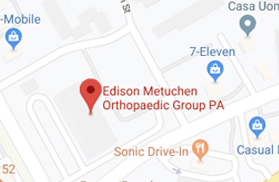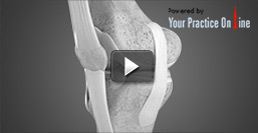Spine
Normal Anatomy of the Spine
The spine also called the back bone is designed to give us stability, smooth movement as well as providing a corridor of protection for the delicate spinal cord. It is made up of bony segments called vertebra and fibrous tissue called inter vertebral discs.
Find out more about Normal Anatomy of the Spine with the following link
Back Pain
The incidence of back pain has drastically increased. Approximately 90% of Americans experience back pain at different stages of their life. In America, the annual expenditure for the treatment of back pain is approximately $50 billion. Back pain is not a disease; rather it is a symptom due to an underlying pathology.
Find out more about Back Pain with the following link
Neck Pain
The cervical spine comprises of the first 7 vertebrae. It supports the weight of the head and allows its smooth movement. Neck pain refers to pain or discomfort resulting from abnormalities or injuries to any of the structures in the neck including the muscles, ligaments, nerves, bones and vertebral joints.
Find out more about Neck Pain with the following link
Spine Trauma
Spine trauma is damage to the spine caused from a sudden traumatic injury caused by an accidental fall or any other physical injury. Spinal injuries may occur while playing, performing normal activities, operating heavy machines, lifting heavy objects, driving automobiles, or when you suffer a fall.
Find out more about Spine Trauma with the following link
Vertebral Fractures
Back pain is an indication of stress fractures known as vertebral compression fractures. Vertebral compression fractures occur when the normal vertebral body of the spine is squeezed or compressed to a smaller height.
Find out more about Vertebral Fractures with the following link
Spine Injections
Spine injection is a nonsurgical treatment modality recommended for treatment of chronic back pain. Injection of certain medicinal agents relieves the pain by blocking the nerve signals between specific areas of the body and the brain. The treatment approach involves injections of local anesthetics, steroids, or narcotics into the affected soft tissues, joints, or nerve roots.
Find out more about Spine Injections with the following link
Spinal Deformity Surgery
The Spine or backbone provides stability to the upper part of our body. It helps to hold the body upright. It consists of several irregularly shaped bones, called vertebrae appearing in a straight line.
Find out more about Spinal Deformity Surgery with the following link
Posterior Lumbar Decompression with Fusion
Coming soon
Lumbar Microdiscectomy
Microdiscectomy is a surgical procedure employed to relieve the pressure over the spinal cord and/or nerve roots, caused by a ruptured (herniated) intervertebral disc. A herniated disc, common in the lower back (lumbar spine) occurs when the inner gelatinous substance of the disc escapes through a tear in the outer, fibrous ring (annulus fibrosis). This may compress the spinal cord or the surrounding nerves, resulting in pain, sensory changes, or weakness in the lower extremities.
Find out more about Lumbar Microdiscectomy with the following link
Spinal Cord Stimulator
Spinal cord stimulation is used for the management of chronic pain in arms and legs that has not responded to conventional modalities of treatment. Specific segments of the spinal cord are stimulated through electrical signals, generated by a spinal cord stimulator, which may be associated with a slight prickling or tingling sensation.
Find out more about Spinal Cord Stimulator with the following link
Anterior Cervical Decompression with Fusion
Anterior cervical discectomy with fusion is an operative procedure to relieve compression or pressure on nerve roots and/or the spinal cord due to a herniated disc or bone spur in the neck.
Find out more about Anterior Cervical Decompression with Fusion with the following link
Corpectomy
Thoracic corpectomy is a procedure performed to relieve pressure on a nerve at the thoracic region (upper and middle back) by removing the source of the compression. It is indicated for conditions such as degenerative disc disease, spinal stenosis, bone spurs, tumor, fracture and infection leading to spinal compression, which cause pain, weakness and numbness in various parts of the body.
Find out more about Corpectomy with the following link
Kyphoplasty
Kyphoplasty is a surgical procedure employed in the management of a compression fracture in the spine secondary to osteoporosis. Vertebral compression fractures result in a reduction in the normal vertebral height. The compression of the vertebrae results in pain, restriction of mobility, height loss, and spinal deformity.
Find out more about Kyphoplasty with the following link
SI Joint Fusion
The sacrum is a triangle shaped bone found in the base of the spine. The iliac bones are the two large bones that form the pelvis. The sacrum and the iliac bones or ilium are connected together by strong ligaments and the junction where these bones meet is referred to as the sacroiliac joint.
Find out more about SI Joint Fusion with the following link
Oblique Lumbar Interbody Fusion
Coming soon
Direct Lateral Interbody Fusion
Coming soon
Interlaminar Lumbar Instrumented Fusion
Coming soon
Minimal Access Surgical Technology Transforaminal Lumbar Interbody Fusion
Our spine is made up of small bony segments called vertebrae. These vertebrae are categorized into cervical or neck vertebrae, thoracic (upper back) and lumbar (lower back). Cushioning discs present between each vertebrae act as shock absorbers.
Find out more about Minimal Access Surgical Technology Transforaminal Lumbar Interbody Fusion with the following link
Lumbar Epidural Steroid Injection
Steroids are chemicals that are naturally present in our body. Synthetic steroids are generally used in the treatment of inflammatory conditions such as spinal disc injury and degenerative diseases among others.
Find out more about Lumbar Epidural Steroid Injection with the following link
Laminectomy (Cervical) with Fusion
Posterior cervical laminectomy and fusion is a surgical procedure performed to decompress the spinal cord and nerve roots in the cervical region of the spine. Some of the spinal conditions that may compress the spinal cord and nerve roots include disc degeneration, bulging or herniated disc, spinal stenosis, and spondylosis.
Find out more about Laminectomy (Cervical) with Fusion with the following link
Posterior Lumbar Interbody Fusion
A posterior lumbar interbody fusion (PLIF) is a surgical technique that involves correction of the spinal problems at the base of the spine by placing bone graft between two vertebrae. Minimally invasive surgical techniques may be used to perform the procedure.
Find out more about Posterior Lumbar Interbody Fusion with the following link
Peripheral Nerve Surgery
The human nervous system comprises of the brain, spinal cord, autonomic nervous system, and the peripheral nerves. The peripheral nerves are cord-like structures and are made up of nerve fiber bundles that transmit sensory information from the body parts to the spinal cord.
Find out more about Peripheral Nerve Surgery with the following link
Click on the topics below to find out more from the orthopedic connection website of American Academy of Orthopaedic Surgeons.
- Cauda equina syndrome
- Fracture of the thoracic and lumbar spine
- Herniated Disk
- IDET (Intradiscal Electrothermal Annuloplasty)
- Kids and Backpacks
- Kyphosis (Curvature of the Spine)
- Sciatica
- Scoliosis in Children and Adolescents
- Spinal fusion
- Spinal Stenosis
- Spondylolysis and Spondylolisthesis
- The Spine
 Menu
Menu






